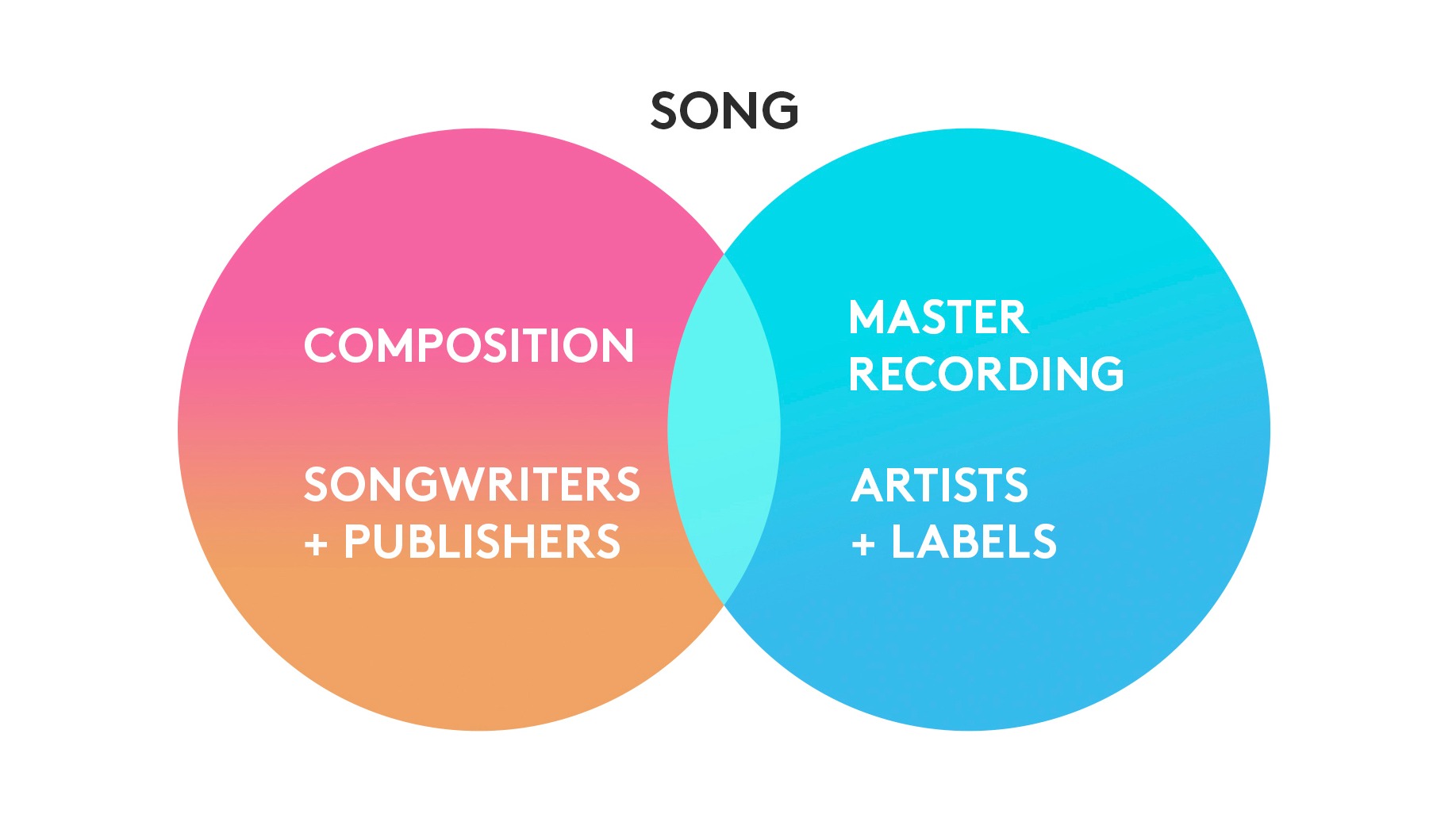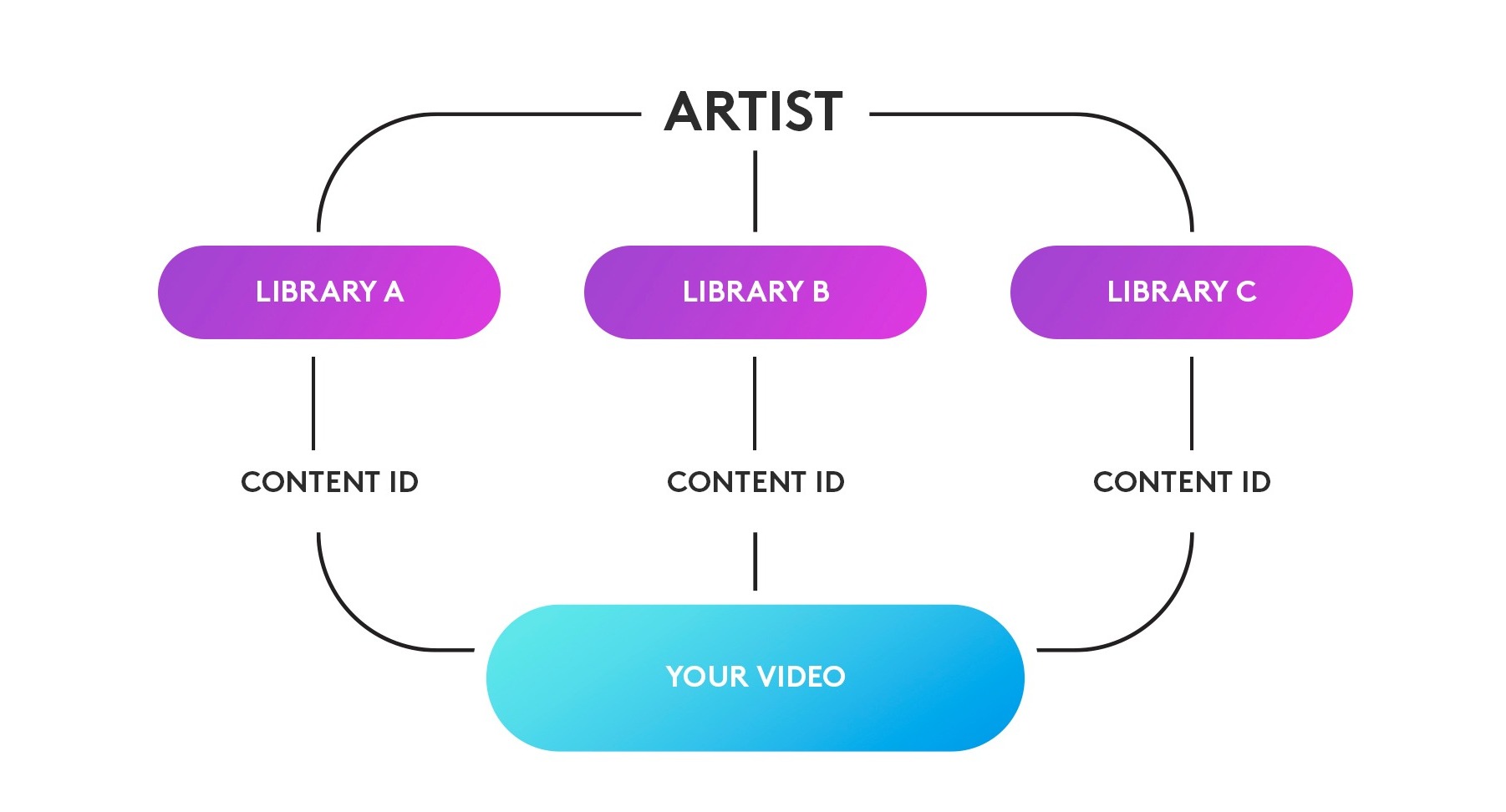We spend a lot of time talking about music licensing here, and for good reason. It’s kind of what we do, and going over the ins and outs of this process is one way we can help you find and choose the best possible music, sound effects, and stock video for your projects.
But music copyright isn’t just a necessary part of life for filmmakers and content creators. It’s also a complicated legal process — something you have to understand whether you are making content for YouTube, streaming on Twitch, filming weddings, or creating ad campaigns for Fortune 500 companies.
In fact, if you're doing anything with licensing sound recordings to use in visual media, you're going to need to understand how this stuff works.
Why copyright law is becoming more important
Regardless of where you share your content, you know how valuable video content has become. But to help you know exactly how valuable we’re talking, here are a few stats:
- Video content will make up 82% of all consumer internet traffic by the end of 2022.
- 79% of people were convinced to make a purchase because of a video you watched.
- Of that group, 50% of them chose the product/brand based on videos they watched.
- Social media videos are 1200% more shareable than any other form of content.
Those numbers will only continue to grow (which is kind of unbelievable). Video will become more and more competitive for both creators and brands, and while resources are readily available, how do you know when you find a good deal? How can you determine which tools are actually going to benefit you, your wallet, and your viewers?
And more importantly, what can you do to protect the ad content, marketing campaigns, short films, and YouTube videos you create?
Music licensing in 100 words or less
One thing every creator, filmmaker, and agency needs is music. Whether it’s a 5-second vlog intro or a custom film score, audio is an essential part of video content. And that means there are legal regulations (and platform-specific guidelines) about how to find, license, and use it.
Copyright law is no joke. From Grammy-winning recording artists to top influencers to the world’s biggest brands, nobody is exempt from copyright infringement. That means it’s on you to understand the risks, follow the rules, and protect yourself and your content.
(See, that was only 88 words. Easy peasy.)
Sync licenses and using music in video content
Before getting too much further, we also need to take a few minutes to cover the different types of licenses that can be applied to sound recordings. For video content, the one you need to know is synchronization licenses, or just “sync licenses” for short.
A sync license covers the process of pairing copyrighted sound recording with any visual media. In your case, that means pairing a song someone else wrote (whether that’s John your neighbor or John Williams or John Legend) with video footage that you want to use for a project.
The simplest way to remember it is that music copyright exists to establish ownership, licensing exists to make sure creators are paid for their work, and sync licensing clarifies that you own the footage but not the music in the final video file you export.

Pro tip: If you happen to be a creative director or a video editor for a larger team, you may be particularly interested in indemnification and how to protect your brand (or your client’s brand) from copyright issues with the music industry. Well, we actually wrote the guide to music copyright for enterprise-level teams.
How ownership affects music licenses
One of the biggest challenges for companies that deal with music licensing has to do with ownership. Or, more specifically, how to convince artists and musicians to work with them.
You see, very few royalty free music companies actually own the music they license. (In fact, we only know of one: Soundstripe.) That’s because a lot of artists decide to “sell” their license to multiple different licensing companies — that way, they increase the odds of people licensing their songs, which means they’ll get paid more often.
It’s a pretty natural thing, right? To want to get recognized and paid for the work you do.
Well, the problem with that comes down to ownership and the idea of exclusive rights. If you can license your neighbor John’s new song from both Company A and Company B, who owns it? What happens if you license it from Company A, use it in a video project, and then Company B sends you a copyright claim because they believe it’s their version?

Sure, you licensed the song, but only from Company A — Company B doesn’t have a way to validate licenses you got from a competitor. So even though you did everything right, your project is still in copyright claim limbo for days or even weeks. It’s a nightmare.
…unless you find a royalty free music company that fully owns every song in their library. That way, they have exclusive rights to their music. The only place to find their songs is in their library, which guarantees you won’t ever have to worry about music copyright hassles again. (It’s a pretty huge benefit, which is why we believe it’s worth the extra investment.)
Three options for getting a license agreement
Now you’re familiar with music licensing, sync licenses, and copyright law. The next step on your checklist of “Mastering the Art of Music Licensing” is to cover the three different ways you can go about actually negotiating a license agreement for a particular song.
- You could take the traditional music licensing route. This means finding a song you want, then contacting the copyright owners (potentially a dozen different people, including the record label, the recording artist, songwriters, etc.). You’ll then spend several months and several thousand dollars getting all of them to agree to a license.
- You could browse the internet for “free” music. That includes fair use songs, Creative Commons songs, and those really sketchy looking sites with thousands of free downloads that aren’t named or labeled at all. The obvious hiccup here is that there’s no quality standard or copyright protection offered, just the convenience of a $0 price.
You could work with a royalty free music company. Some of them offer single-song licenses, and others — like Soundstripe — offer subscriptions that give you unlimited access to thousands of songs. You get the quality music of “traditional” licensing without paying $5,000 for a single song, but it’s not exactly free music.
Like anything in life, there are pros and cons to each path. But copyright law isn’t exactly known for its flexibility, and the last thing you want is to have a video or a channel delisted and demonetized for something you could have avoided if you had just dealt with the copyright owners.
How to avoid copyright infringement
Even if you follow every line of the fine print, there’s always a chance YouTube, Facebook, Twitch, or any other platform will flag your video for copyright infringement. The music business (and particularly music publishers and record labels) have pretty serious legal teams for the sole purpose of protecting the intellectual property they own.
But if you take advantage of every resource available to you, it’s possible to enjoy the rest of your video-making days without getting another claim.
Yes, we’ve covered why Soundstripe is a great option for filmmakers, content creators, and anyone else who produces video content. But it’s more than just music licensing made easy — it’s a way to get music from Grammy-winning artists faster, easier, and cheaper than anything you’ve experienced before.
The fact that we have exclusive rights to every song in our library reduces the odds of anyone else being able to flag your videos. Our subscription plan gets you unlimited access to thousands of royalty free songs from practically any genre you can think of. And our library search and filter tools will help you find a song in 5 minutes or less.
We’ll even help you whitelist your content to provide you with copyright protection before you even start licensing songs and publishing videos. We know that there’s nothing worse than putting days, weeks, or even months into a project, only for the content to be blocked or demonetized because of something you could have avoided.
So hopefully this guide gives you the information you need to protect your content from copyright infringement and make smarter choices about where you find music and how you approach music licensing for any sound recordings you need..
If you did find this useful, here are a few other posts from the Soundstripe blog that offer additional tips and tricks for video production:


